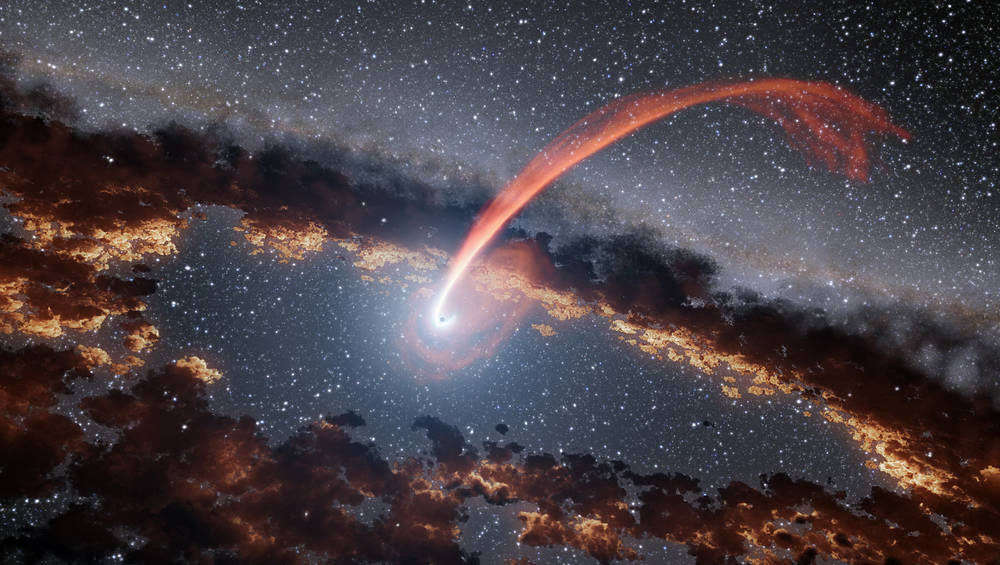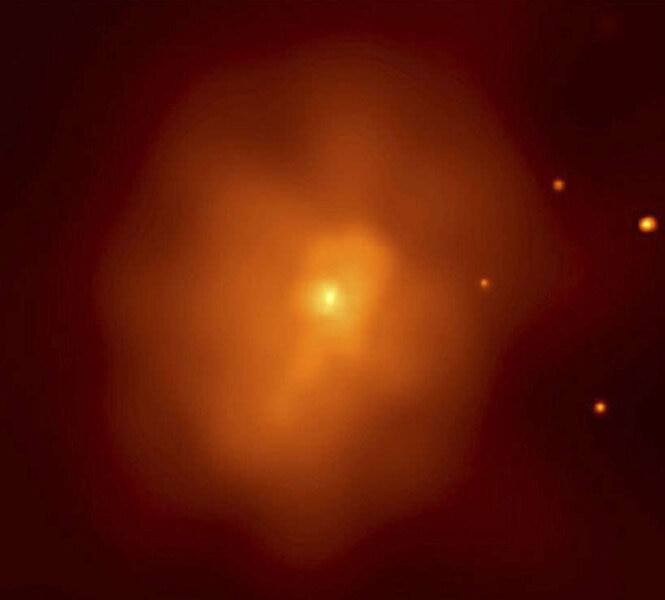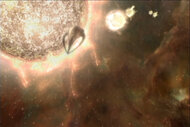Create a free profile to get unlimited access to exclusive videos, sweepstakes, and more!
So much darkness…are supermassive black holes made of dark matter?

Because black holes can never get enigmatic enough, they just threw a new mystery at us. Some of them might not be the corpses of collapsed stars at all. What they could be enters the realm of the bizarre.
There may be supermassive black holes out there that have been formed out of dark matter. Seriously. Though black holes usually call to mind the superdense core of a gigantic star in its death throes — which finally collapses in on itself and devours any star stuff that ventures too close — astrophysicist Carlos R. Argüelles and his team of researchers now have a theory of how else these beasts might emerge from something even darker. They suggest that the supermassive black holes lurking in galactic cores may have grown unnaturally fast because they got supercharged by dark matter.
“[There is] the possibility for the [dark matter] core to mimic the massive black holes at the centers of galaxies, while the outer halo can explain the rotation curves,” said Argüelles, who recently published a study in Monthly Notices of the Royal Astronomical Society.
Timing is everything. The oldest known supermassive black hole formed only 670 million years after the Big Bang, which seems like an eternity but is hardly a blink in the eye of the cosmos. But how could these things have gone in to beast mode so fast? Anything made of baryonic matter (“regular” matter that can be observed in one way or another) takes time to grow into a monster. Dark matter cannot be seen or detected, and some argue that it might not even exist, but, skepticism aside, it doesn't face the same limits as baryonic matter. The scientists argue that it is possible for a galaxy to have a stable and extremely dense core of dark matter that is surrounded by a less dense dark matter halo.
There is one thing these types of black holes — if they exist — have in common with the collapsed cores of stars that went supernova. Both have to start out as extremely dense clumps of matter that eventually reach a critical mass at which point they collapse into black holes. When something reaches critical mass, that means it has accumulated the minimum mass required to start a reaction. Meaning, that clump of dark matter would have to get dense enough to collapse into the bottomless cosmic pit otherwise known as a black hole. That can happen much more quickly than waiting out the billions of years it would take a megastar to finally give up the ghost.
Black holes that form like this could have come into being before stars and galaxies. Instead of forming from one of the stars in a galaxy, the black hole would have already been there. Something that massive would have more than enough gravitational force to grab and rearrange objects depending on their own size and gravity. Jupiter and Saturn are thought to have had something of an effect like this on our solar system, even though they are gargantuan gas planets and not black holes. The solar system is believed to have started out with a different arrangement of planets and moons before they disrupted everything.
But what if dark matter can’t always reach the critical mass? Argüelles and his team also came up with an explanation for that. If a core of dark matter is not dense enough to collapse into a black hole, it might just hang out there as a galactic nucleus that would behave in a lot of the same ways as a black hole, just not with as much power.
“Our approach allows us to link the behavior and evolution of the dark matter particles from the early universe all the way to the late stages,” Argüelles said.
So could our own supermassive black hole, Sag A*, have formed out of dark matter? Maybe someday humans will become mind-blowingly technologically advanced enough to find out.















